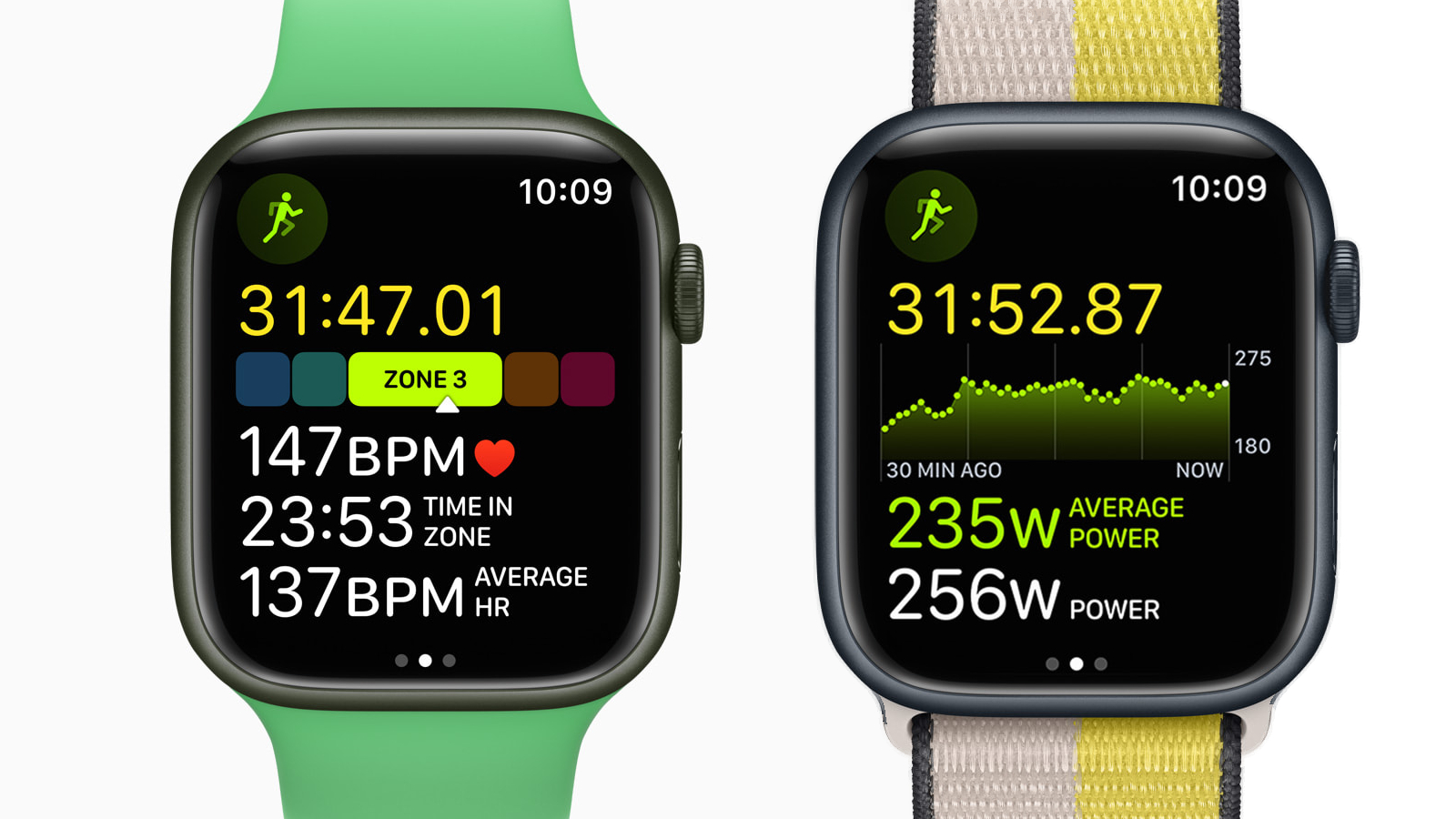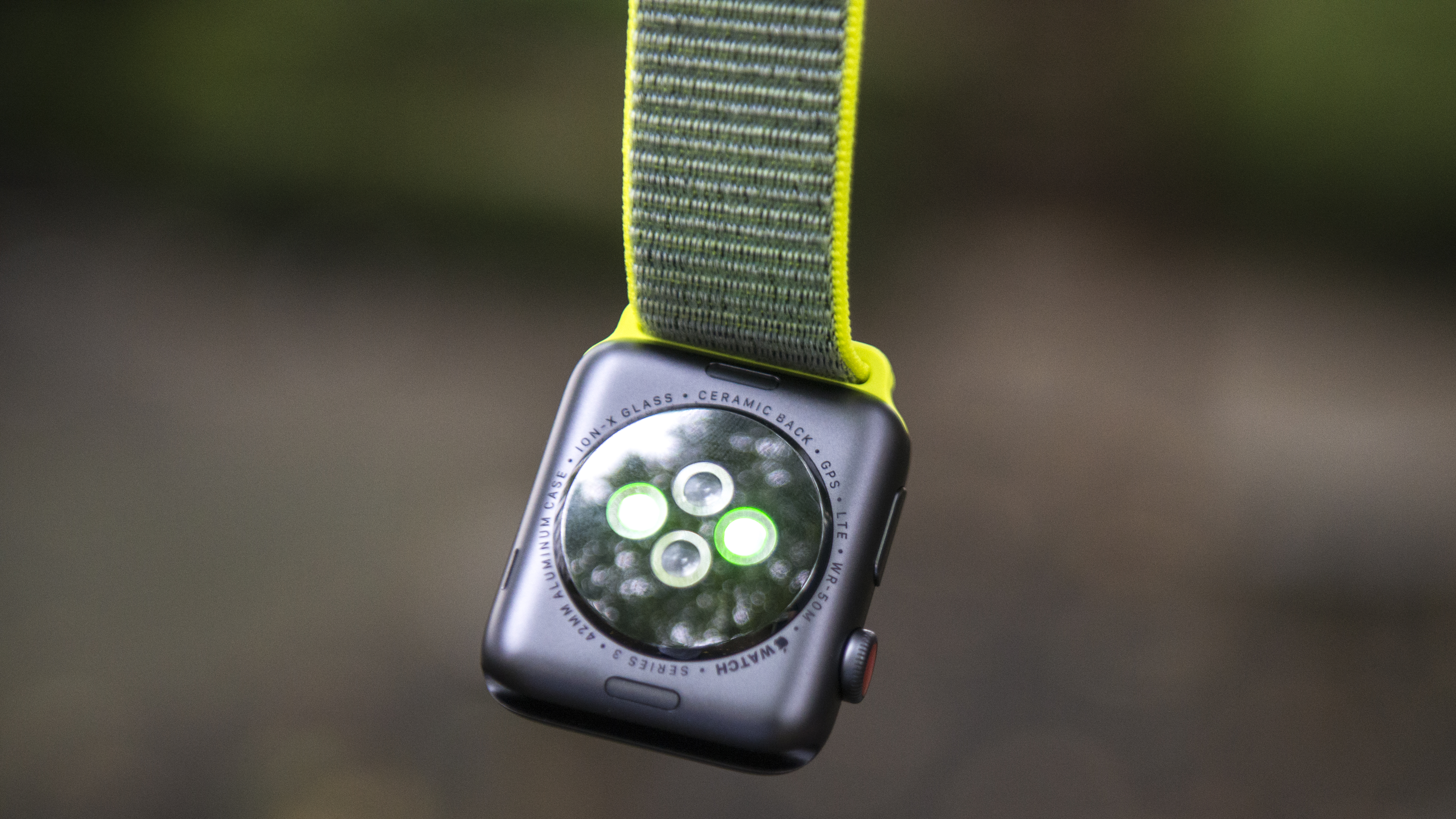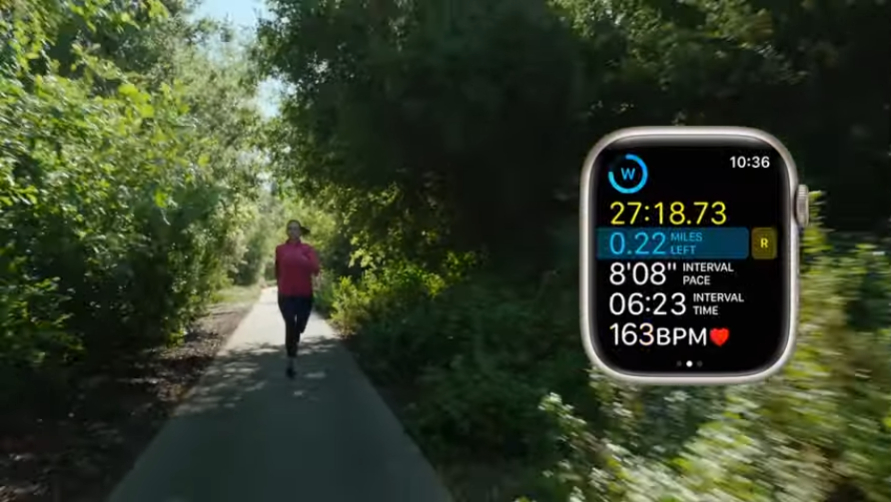The Apple Watch now has a new mystery, thanks to watchOS 9
Why are you only bringing this now, Apple?

There’s been something that’s bugging me for years about the Apple Watch, specifically the way it's used as a training tool for running.
It’s safe to say that Apple’s timepiece has been on an upward trajectory regarding its run-tracking prowess over the years. After all, the first incarnation didn’t even have GPS on board, so it was relatively useless as a fitness pal for runners without the phone present.
With each Watch iteration since then Apple has made slow and solid improvements, and the company really stepped things up with the launch of watchOS 9 at WWDC 2022, adding in a number of new elements such as structured interval training and customizable data screens to make it a real fitness companion.
However, while the Apple Watch has always had a heart rate monitor, it’s never had something that I consider a bare minimum to be considered the best running watch: heart rate training.
What does heart rate training mean? It’s where you try and keep your training in a specific zone throughout your workout - if you’re trying to get fitter, then maintaining a certain heart rate can help you more than relying on keeping up a pace, as terrain or muscle issues might mean you can’t be as fast as you’d like.
Train with heart rate, however, and you can make sure you’re working as hard (or not, if you’re trying to keep things chilled on an easy run) as you want throughout. Going up a hill and slowing down? Your heart rate won’t be, trust me.

So you might say that it’s great that Apple finally has this feature on the Watch with this new software… but here’s that mystery: why now?
Get daily insight, inspiration and deals in your inbox
Sign up for breaking news, reviews, opinion, top tech deals, and more.
Given Apple has a had a heart rate monitor on the wrist for a long time, it could have easily allowed users to set their zones (or done it automatically based on one’s maximum heart rate, which it’s been able to measure for years) and then provided alerts to let them know when they’re falling out of a desired range.
In short, Apple could have brought this feature with the first Apple Watch many years ago. So why didn't it?
It’s highly likely that Apple didn’t do this because of a phenomenon known as cardiac drift, where other physiological factors (from poor hydration or nutrition to a lack of high-level fitness) mean the same amount of effort will yield an ever-increasing heart rate over the course of a workout.
That means you’ll end up working harder to stay in the same zone throughout a longer run - which kind of defeats the purpose and could easily demotivate newer runners, who the Apple Watch has traditionally been aimed at.
So, again, why are you doing this now, Apple? Sure, the brand has improved the software algorithms with watchOS 9, which means it can more accurately pinpoint your heart rate from the wrist, and that would possibly mean it could remove cardiac drift… but that seems unlikely.
Perhaps it’s because wrist-based heart rate monitoring jhas never been as accurate as using a chest strap to measure your heart rate - something Apple openly admits to - and only with the recent upgrades to its software is Apple able to feel confident in its ability to deliver accurate heart rate data.
After all, heart-rate training is a feature that rivals Polar and Garmin have been offering for years, and is one of many key advantages their users have enjoyed over the Apple Watch, so it’s been odd Apple has eschewed it for so long.
If the decision to delay this feature is down to accuracy, that makes a little more sense - rivals like Garmin often promote the use of a chest-based heart rate monitor (and manufacture their own) where Apple rarely highlights that you’re even able to connect one and probably doesn't want to denigrate its own hardware on the Watch by pushing the need to connect accessories to get the best out of it.
Power to the people

There’s one more mystery: Apple’s new running power metric. This is something of a surprise, following in the footsteps of other high-end fitness brands to achieve running power without the need for an additional sensor on the shoe or similar.
What the Watch is monitoring with power, using its ability to track your motion, is how much force you’re expelling with each step, giving a result in watts - a common measure for power across many platforms.
Running power monitoring is, theoretically, a better measurement of output than heart rate. Remember, there’s no universal way to monitor power - in the same way you’ll get different step counts with different fitness bands - but as long as Apple can be consistent in its running power feedback, then this should be a better way to check how you’re performing over heart rate zones.
I’m looking forward to getting the finished version of watchOS 9 on a new Apple Watch later this year and giving the new metrics a good try - if they work well, I can sort of forgive them not being around until now, but I still think Apple has been holding these features back purposely for some reason.
The Apple Watch has still got a long way to go to beat the best Garmin watches out there - but it could have been moved a little closer with these upgrades.

Gareth has been part of the consumer technology world in a career spanning three decades. He started life as a staff writer on the fledgling TechRadar, and has grew with the site (primarily as phones, tablets and wearables editor) until becoming Global Editor in Chief in 2018. Gareth has written over 4,000 articles for TechRadar, has contributed expert insight to a number of other publications, chaired panels on zeitgeist technologies, presented at the Gadget Show Live as well as representing the brand on TV and radio for multiple channels including Sky, BBC, ITV and Al-Jazeera. Passionate about fitness, he can bore anyone rigid about stress management, sleep tracking, heart rate variance as well as bemoaning something about the latest iPhone, Galaxy or OLED TV.